here another video:
http://www.youtube.com/watch?v=5ruXdbUl_TE
Scince Class
Welcome to my blog. Here you can learn, read and see things very interasting and educational.My blog is about words,topics and others things. In this case is about Science.In this quarter I am studing about ligth so soon I will add some games about ligth.Well, thanks for visiting my blog.
sábado, 11 de junio de 2011
classifying living things
here you can see the evolution of HOMER that is also of the man: http://www.youtube.com/watch?v=faRlFsYmkeY
cells divide and grow
Here you can see sexual reproduction in plants!!!
http://www.youtube.com/watch?v=FsBQQDg5GIw&feature=related
http://www.youtube.com/watch?v=FsBQQDg5GIw&feature=related
How cells work
Here you can see a video of photsynthesis:
the number #1 something funny http://www.youtube.com/watch?v=lqEDz2vfhpQ&feature=related
The number #2 is a song about photosynthesis:
http://www.youtube.com/watch?v=ooScAV6oVFw&feature=related
the number #1 something funny http://www.youtube.com/watch?v=lqEDz2vfhpQ&feature=related
The number #2 is a song about photosynthesis:
http://www.youtube.com/watch?v=ooScAV6oVFw&feature=related
miércoles, 27 de abril de 2011
Sources Of energy
solar cell a device that generates an electric current from sunlight

biomass conversion getting energy from plant and animal materials by changing them into high-quality fuels

nuclear fission the spliting of a nucleus with large mass into two nuclei with smaller masses

chain reaction a reaction that kept going by prducts of reaction

nuclear fiction the merge of nuclie with smaller masses into a nucleus with a larger mass

hydroelectricity the use of flowing water to generate elctricity

thermal pollution the excess of the enviroment


biomass conversion getting energy from plant and animal materials by changing them into high-quality fuels

nuclear fission the spliting of a nucleus with large mass into two nuclei with smaller masses

chain reaction a reaction that kept going by prducts of reaction

nuclear fiction the merge of nuclie with smaller masses into a nucleus with a larger mass

hydroelectricity the use of flowing water to generate elctricity

thermal pollution the excess of the enviroment

1.Thermal expansion: The expansion of matter when its temperature is raised.

Pressure: The force on each unit of area of a surface.

3.Melting: The change of a solid into a liquid.

4.Vaporization: The change of a liquid to a gas as molecules break free from each other.

5.Condensation: The change of a gas to a liquid as molecules break free from each other.

6.Freezing: The change of a liquid into a solid.

7. Boiling: The formation of bubbles of vapor that escape from a liquid that is being heated.

8. Evaporation: The vaporization of molecules from the surface of a liquid.

Pressure: The force on each unit of area of a surface.

3.Melting: The change of a solid into a liquid.

4.Vaporization: The change of a liquid to a gas as molecules break free from each other.

5.Condensation: The change of a gas to a liquid as molecules break free from each other.

6.Freezing: The change of a liquid into a solid.

7. Boiling: The formation of bubbles of vapor that escape from a liquid that is being heated.

8. Evaporation: The vaporization of molecules from the surface of a liquid.
martes, 26 de abril de 2011
Temperature and Heat
Kinetic energy: the energy of a moving object.

Potential energy: energy storedin an object of materials.

Temperature: the average kinetic energy of the molecules in a materials.

heat:energy that flows between objects that have differents temperatures.
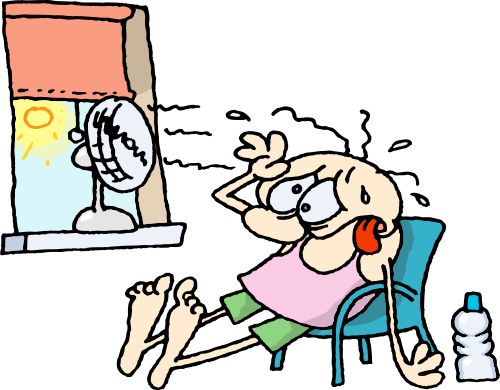
Radiations: The transfer of enrgy by elecromangnetic waves.
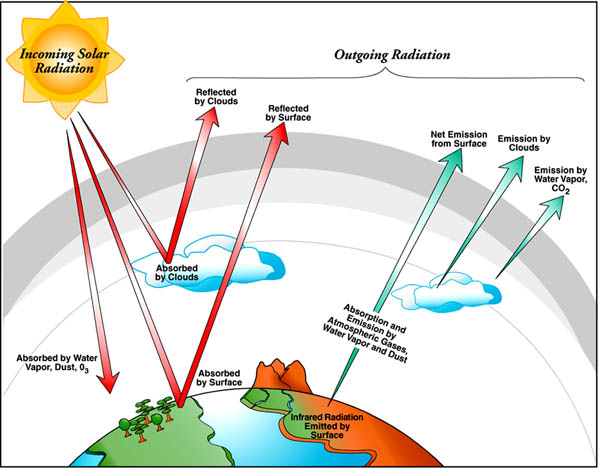
conduction:the transfer of energy by the flow ofa liquid or gas.

Convection:the transfer of energy by the flow of a liquid or gas.
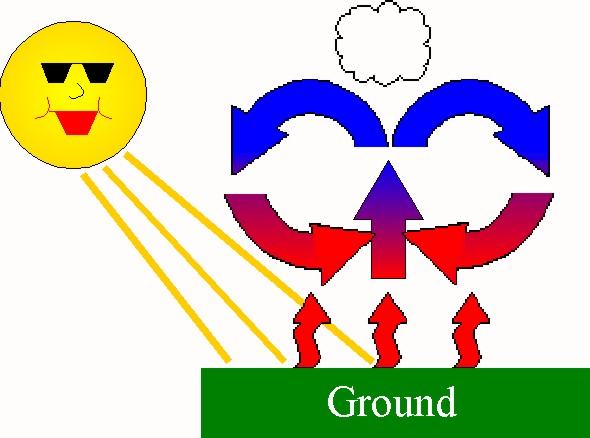
Insulation: prevents heat from flowing in out of a materials.


Potential energy: energy storedin an object of materials.

Temperature: the average kinetic energy of the molecules in a materials.

heat:energy that flows between objects that have differents temperatures.

Radiations: The transfer of enrgy by elecromangnetic waves.

conduction:the transfer of energy by the flow ofa liquid or gas.

Convection:the transfer of energy by the flow of a liquid or gas.

Insulation: prevents heat from flowing in out of a materials.

Chemical Changes
compound a chemical combination of two or more elements.

chemical bond a link that atoms or elctrically charged particles can form with each other.

chemical formula a way of using letters and numbers to show how much of each element is in a substance.

ion an elctrically charged particle with unuqual numbers of protons and electrons.

molecule a group of bonded atoms that act as a single particle.

chemical property a way of describing how a substance changes chemically with other subtances.

exothermic a reaction that gives off energy.

endothermic a reaction that absob heat


chemical bond a link that atoms or elctrically charged particles can form with each other.
chemical formula a way of using letters and numbers to show how much of each element is in a substance.

ion an elctrically charged particle with unuqual numbers of protons and electrons.

molecule a group of bonded atoms that act as a single particle.

chemical property a way of describing how a substance changes chemically with other subtances.

exothermic a reaction that gives off energy.

endothermic a reaction that absob heat

domingo, 17 de abril de 2011
Elements and Atoms
element: a substance that cannot be broken down any further into anything simpler.

atom: the smallest particle of an element taht has the same chemical properties as the element.

nucleus: a n atom's dense center, where most of its mass is.
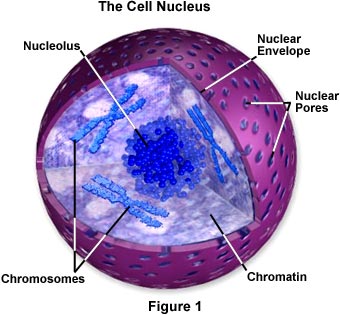
electron: anegatively charged particle that moves around an atom's nucleus.

proton: a positively charged particle inside an atom's nucleus.

neutron: a particle with no charge inside an atom's nucleus.
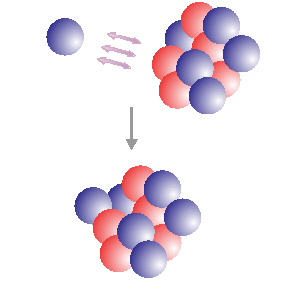
atomic number: the number of protons in an atom.

metal: a ny of a group of elements that conduct heat and elctricity, is shiny and bendable.


atom: the smallest particle of an element taht has the same chemical properties as the element.

nucleus: a n atom's dense center, where most of its mass is.

electron: anegatively charged particle that moves around an atom's nucleus.

proton: a positively charged particle inside an atom's nucleus.

neutron: a particle with no charge inside an atom's nucleus.

atomic number: the number of protons in an atom.

metal: a ny of a group of elements that conduct heat and elctricity, is shiny and bendable.

Physical Properties
matter: any solid, liquid or gas.

mass: amount of matter in an object

volume: the amount of space an object takes up.

density: the amount of mass in a certain volume of material.

physical property: a property that can be observed without changing the identify of a substance.

physical change: a change in size, shape, or state without forming a new substance.

solution: a mixture of one subtance dissolved in another so thatr the properties are the same throughtout.

chemical change: a change in matter that produces a new subtance with differnet properties from the original.


mass: amount of matter in an object

volume: the amount of space an object takes up.

density: the amount of mass in a certain volume of material.

physical property: a property that can be observed without changing the identify of a substance.

physical change: a change in size, shape, or state without forming a new substance.

solution: a mixture of one subtance dissolved in another so thatr the properties are the same throughtout.

chemical change: a change in matter that produces a new subtance with differnet properties from the original.

Suscribirse a:
Entradas (Atom)
